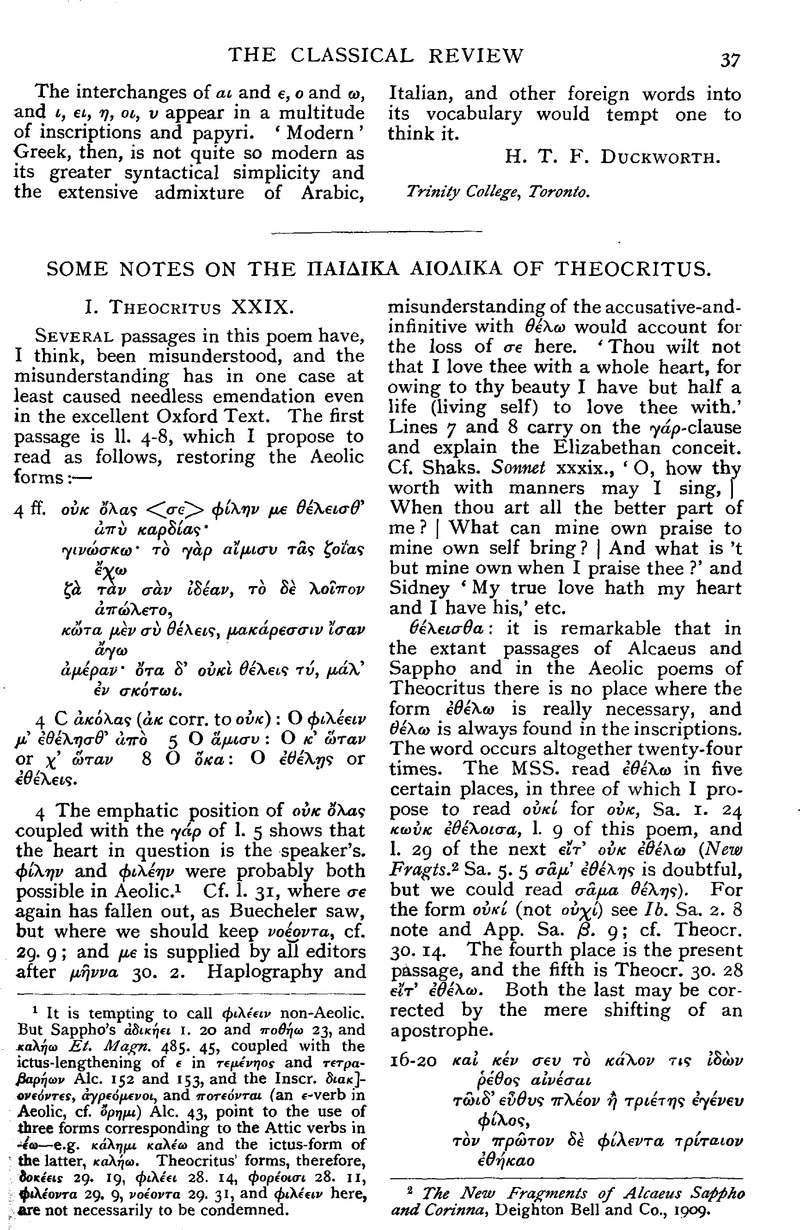No CrossRef data available.
Article contents
Some Notes on the ΠΑΙΔΙΚΑ ΑΙΟΛΙΚΑ of Theocritus
Published online by Cambridge University Press: 27 October 2009
Abstract

- Type
- Original Contributions
- Information
- Copyright
- Copyright © The Classical Association 1911
References
page 37 note 1 It is tempting to call φιλειν non-Aeolic. But Sappho's δικει 1. 20 and ποθω 23, and καλω Et. Magn. 485. 45, coupled with the ictus-lengthening of ε in τεμνηος and τετραβαρων Alc. 152 and 153, and the Inscr. ![]() and
and ![]() (an ε-verb in Aeolic, cf.
(an ε-verb in Aeolic, cf. ![]() ) Alc. 43, point to the use of three forms corresponding to the Attic verbs in
) Alc. 43, point to the use of three forms corresponding to the Attic verbs in ![]() e.g.
e.g. ![]() and the ictus-form of the latter, καλω. Theocritus' forms, therefore,
and the ictus-form of the latter, καλω. Theocritus' forms, therefore, ![]() 29. 19,
29. 19, ![]() 28. 14,
28. 14, ![]() 28. II,
28. II, ![]() 29. 9,
29. 9, ![]() 29. 31, and
29. 31, and ![]() here, are not necessarily to be condemned.
here, are not necessarily to be condemned.
page 37 note 2 The New Fragments of Alcaeus Sappho and Corinna, Deighton Bell and Co., 1909.Google Scholar
page 38 note 1 Since this was set up in type I have learnt with regret of the death of this distinguished scholar.


